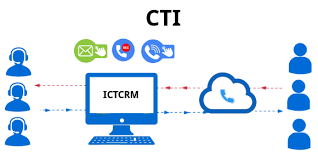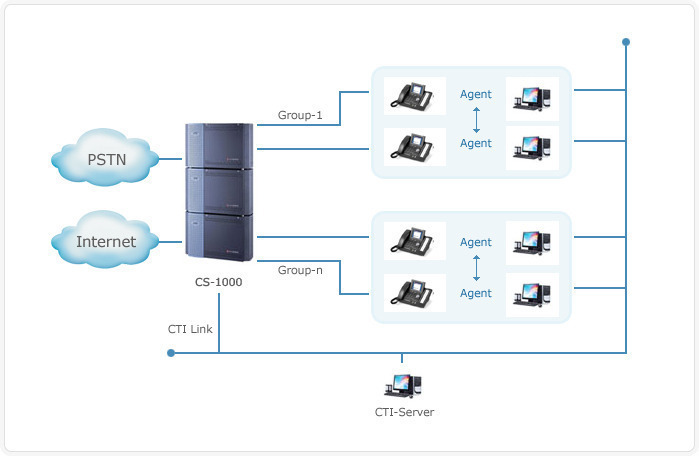Revolutionizing Communication, Unleashing the Potential of Computer Telephony Integration
Communication plays a vital role in human interaction, enabling the sharing of information, ideas, and emotions. Technological progress has drastically reshaped communication, enhancing its speed, efficiency, and global accessibility. Among these innovations is Computer Telephony Integration (CTI), a groundbreaking technology that seamlessly integrates computers and telephony systems. This article examines the transformative impact of CTI on communication, delving into its advantages, applications, and future prospects. Discover how CTI is revolutionizing the way we connect and communicate.
Understanding Computer Telephony Integration (CTI):
Computer Telephony Integration (CTI) is the fusion of computer and telephone systems, facilitating seamless communication and boosting overall efficiency and efficacy. CTI integrates telephony functionalities, including voice calls, voicemail, caller ID, call routing, and call logging, with computer-based applications like customer relationship management (CRM) systems, helpdesk software, and various business tools. This integration streamlines communication processes, heightens productivity, and offers valuable insights to businesses by connecting telephony and computer systems.

The Evolution of CTI:
In the 1980s, the concept of CTI emerged as computer and telephony technologies started to merge. At first, CTI relied on hardware-based solutions that necessitated specialized equipment to establish connections between telephony systems and computers. However, with the progress in software and networking, CTI transformed into a software-driven solution, becoming more accessible and adaptable. Presently, cloud-based CTI solutions are becoming increasingly popular, providing businesses with scalable and cost-effective choices for integrating their communication systems.

3. Benefits of CTI:
3.1 Enhanced Productivity:
CTI empowers businesses and individuals to handle communication tasks efficiently. By integrating telephony functions with computer applications, employees can make and receive calls directly from their computers, eliminating the need for separate phone systems. CTI also enables features like click-to-dial, call routing, and automated call logging, saving time and reducing human errors. These streamlined processes contribute to increased productivity and improved customer service.
3.2 Seamless Customer Experience:
CTI plays a pivotal role in enhancing customer interactions. By integrating telephony with CRM systems, businesses can access customer information during incoming calls, enabling personalized and efficient customer service. CTI also facilitates intelligent call routing, ensuring that customers are directed to the most appropriate agent based on their needs. This seamless integration results in improved customer satisfaction and loyalty.
3.3 Data-driven Insights:
CTI generates valuable data and insights regarding communication patterns, customer behavior, and call metrics. By analyzing this data, businesses can identify trends, optimize workflows, and make informed decisions. CTI enables call recording, enabling organizations to review and evaluate customer interactions for training purposes, quality control, and compliance requirements. These data-driven insights provide businesses with a competitive edge and valuable feedback for continuous improvement.
4. Applications of CTI:
4.1 Call Centers and Customer Service:
Call centers leverage CTI to improve their efficiency and effectiveness. CTI enables automatic call distribution, ensuring that calls are routed to the most appropriate agent based on predefined criteria. It also provides real-time information about customers, enabling agents to personalize interactions and resolve issues promptly. CTI helps in reducing call handling time, increasing first-call resolution rates, and improving overall customer satisfaction.
4.2 Sales and Marketing:
CTI is invaluable in sales and marketing departments, enabling seamless communication with potential customers. It facilitates automatic dialing, call tracking, and call logging, enabling sales representatives to manage their calls efficiently and focus on closing deals. By integrating CTI with CRM systems, sales teams can access customer information during calls, enabling personalized interactions and informed decision-making.
4.3 Healthcare and Telemedicine:
CTI has revolutionized communication in the healthcare industry, especially in telemedicine. With CTI, medical professionals can connect with patients remotely, facilitating consultations, diagnoses, and treatment recommendations. CTI enables secure video calls, easy appointment scheduling, and integration with Electronic Health Records (EHR) systems, ensuring efficient and accurate communication between healthcare providers and patients.
5. Future Possibilities:
As technology continues to advance, CTI is poised to offer even more transformative possibilities for communication. Some potential future developments include:
5.1 Integration with Artificial Intelligence (AI):
AI integration with CTI can enhance call routing capabilities by analyzing customer speech patterns, sentiment analysis, and language understanding. This integration can automate call handling, freeing up agents to focus on more complex tasks and improving overall customer experience.
5.2 Augmented Reality (AR) and Virtual Reality (VR):
CTI can be integrated with AR and VR technologies to enable immersive and interactive communication experiences. This integration could have profound implications for remote collaboration, training, and customer support, creating virtual environments that simulate real-world interactions.
5.3 Internet of Things (IoT) Integration:
CTI's integration with IoT devices can facilitate intelligent automation and communication. For example, smart homes equipped with IoT devices can utilize CTI to manage and control various functions using voice commands or other telephony features.
Conclusion:
Computer Telephony Integration (CTI) has significantly revolutionized communication by seamlessly combining telephony systems with computers and applications. The integration of telephony features with computer systems has enhanced productivity, improved customer experiences, and generated valuable data-driven insights. CTI finds applications in call centers, sales and marketing, healthcare, and various other industries. With ongoing advancements and future possibilities, CTI continues to shape the way we communicate, offering exciting opportunities for improved efficiency, personalization, and innovation.
Leveraging Open Source in ICT





